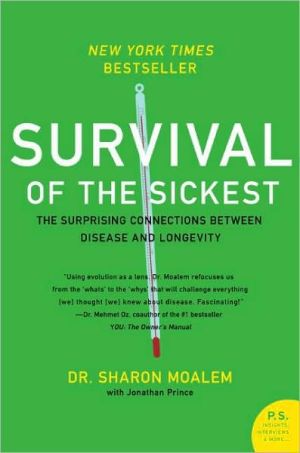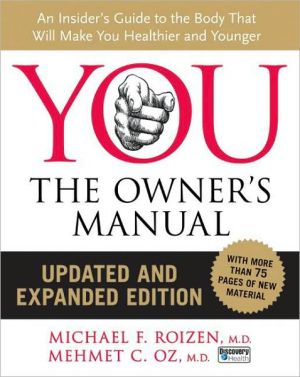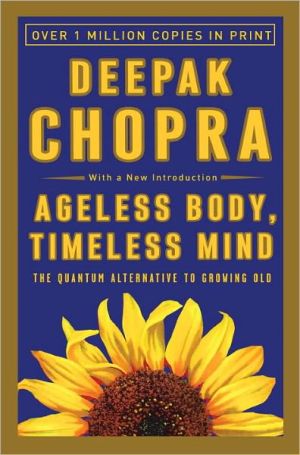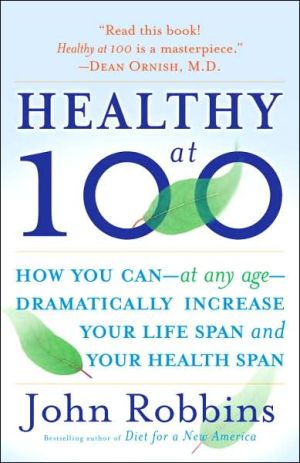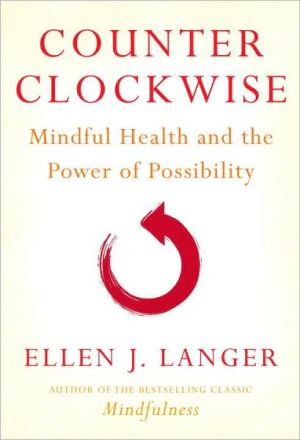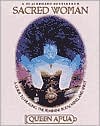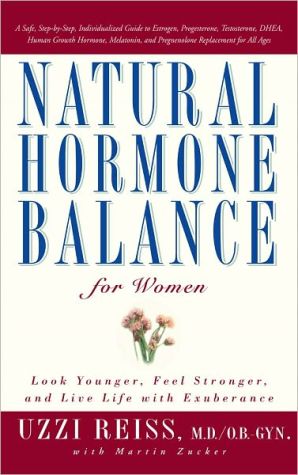Survival of the Sickest: The Surprising Connections between Disease and Longevity
Joining the ranks of modern myth busters, Dr. Sharon Moalem turns our current understanding of illness on its head and challenges us to fundamentally change the way we think about our bodies, our health, and our relationship to just about every other living thing on earth. Through a fresh and engaging examination of our evolutionary history, Dr. Moalem reveals how many of the conditions that are diseases today actually gave our ancestors a leg up in the survival sweepstakes. But Survival of...
Search in google:
You're already living it. Was diabetes evolution's response to the last Ice Age? Did a deadly genetic disease help our ancestors survive the bubonic plagues of Europe? Will a visit to the tanning salon help lower your cholesterol? Why do we age? Why are some people immune to HIV? Can your genes be turned on -- or off? Joining the ranks of modern myth busters, Dr. Sharon Moalem turns our current understanding of illness on its head and challenges us to fundamentally change the way we think about our bodies, our health, and our relationship to just about every other living thing on earth, from plants and animals to insects and bacteria. Through a fresh and engaging examination of our evolutionary history, Dr. Moalem reveals how many of the conditions that are diseases today actually gave our ancestors a leg up in the survival sweepstakes. When the option is a long life with a disease or a short one without it, evolution opts for disease almost every time. Everything from the climate our ancestors lived in to the crops they planted and ate to their beverage of choice can be seen in our genetic inheritance. But Survival of the Sickest doesn't stop there. It goes on to demonstrate just how little modern medicine really understands about human health, and offers a new way of thinking that can help all of us live longer, healthier lives. Survival of the Sickest is filled with fascinating insights and cutting-edge research, presented in a way that is both accessible and utterly absorbing. This is a book about the interconnectedness of all life on earth -- and, especially, what that means for us. Rocky Mountain News “fascinating, enlightening and reader-friendly...This is one not-to-be-missed fantastic journey across the evolutionary landscape of humankind.
\ Survival of the Sickest \ The Surprising Connections Between Disease and Longevity \ \ By Sharon Moalem HarperCollins Publishers, Inc. \ Copyright © 2008 \ Sharon Moalem \ All right reserved.\ \ ISBN: 9780060889661 \ \ \ Chapter One\ Ironing it Out\ Aran Gordon is a born competitor. He's a top financial executive, a competitive swimmer since he was six years old, and a natural long-distance runner. A little more than a dozen years after he ran his first marathon in 1984 he set his sights on the Mount Everest of marathons—the Marathon des Sables, a 150-mile race across the Sahara Desert, all brutal heat and endless sand that test endurance runners like nothing else.\ As he began to train he experienced something he'd never really had to deal with before—physical difficulty. He was tired all the time. His joints hurt. His heart seemed to skip a funny beat. He told his running partner he wasn't sure he could go on with training, with running at all. And he went to the doctor.\ Actually, he went to doctors. Doctor after doctor—they couldn't account for his symptoms, or they drew the wrong conclusion. When his illness left him depressed, they told him it was stress and recommended he talk to a therapist. When blood tests revealed a liver problem, they told him he was drinking too much. Finally, after three years, his doctors uncovered the real problem. New tests revealed massive amounts of iron in his blood and liver—off-the-charts amounts of iron.\ Aran Gordon was rusting to death.\ Hemochromatosis is a hereditary disease that disrupts the waythe body metabolizes iron. Normally, when your body detects that it has sufficient iron in the blood, it reduces the amount of iron absorbed by your intestines from the food you eat. So even if you stuffed yourself with iron supplements you wouldn't load up with excess iron. Once your body is satisfied with the amount of iron it has, the excess will pass through you instead of being absorbed. But in a person who has hemochromatosis, the body always thinks that it doesn't have enough iron and continues to absorb iron unabated. This iron loading has deadly consequences over time. The excess iron is deposited throughout the body, ultimately damaging the joints, the major organs, and overall body chemistry. Unchecked, hemochromatosis can lead to liver failure, heart failure, diabetes, arthritis, infertility, psychiatric disorders, and even cancer. Unchecked, hemochromatosis will lead to death.\ For more than 125 years after Armand Trousseau first described it in 1865, hemochromatosis was thought to be extremely rare. Then, in 1996, the primary gene that causes the condition was isolated for the first time. Since then, we've discovered that the gene for hemochromatosis is the most common genetic variant in people of Western European descent. If your ancestors are Western European, the odds are about one in three, or one in four, that you carry at least one copy of the hemochromatosis gene. Yet only one in two hundred people of Western European ancestry actually have hemochromatosis disease with all of its assorted symptoms. In genetics parlance, the degree that a given gene manifests itself in an individual is called penetrance. If a single gene means everyone who carries it will have dimples, that gene has very high or complete penetrance. On the other hand, a gene that requires a host of other circumstances to really manifest, like the gene for hemochromatosis, is considered to have low penetrance.\ Aran Gordon had hemochromatosis. His body had been accumulating iron for more than thirty years. If it were untreated, doctors told him, it would kill him in another five. Fortunately for Aran, one of the oldest medical therapies known to man would soon enter his life and help him manage his iron-loading problem. But to get there, we have to go back.\ Why would a disease so deadly be bred into our genetic code? You see, hemochromatosis isn't an infectious disease like malaria, related to bad habits like lung cancer caused by smoking, or a viral invader like smallpox. Hemochromatosis is inherited—and the gene for it is very common in certain populations. In evolutionary terms, that means we asked for it.\ Remember how natural selection works. If a given genetic trait makes you stronger—especially if it makes you stronger before you have children—then you're more likely to survive, reproduce, and pass that trait on. If a given trait makes you weaker, you're less likely to survive, reproduce, and pass that trait on. Over time, species "select" those traits that make them stronger and eliminate those traits that make them weaker.\ So why is a natural-born killer like hemochromatosis swimming in our gene pool? To answer that, we have to examine the relationship between life—not just human life, but pretty much all life—and iron. But before we do, think about this—why would you take a drug that is guaranteed to kill you in forty years? One reason, right? It's the only thing that will stop you from dying tomorrow.\ Just about every form of life has a thing for iron. Humans need iron for nearly every function of our metabolism. Iron carries oxygen from our lungs through the bloodstream and releases it in the body where it's needed. Iron is built into the enzymes that do most of the chemical heavy lifting in our bodies, where it helps us to detoxify poisons and to convert sugars into energy. Iron-poor diets and other iron deficiencies are the most common cause of anemia, a lack of red blood cells that can cause fatigue, shortness of breath, and even heart failure. (As many as 20 percent of menstruating women may have iron-related anemia because their monthly blood loss produces an iron deficiency. That may be the case in as much as half of all pregnant women as well—they're not menstruating, but the passenger they're carrying is hungry for iron too!) Without enough iron our immune system functions poorly, the skin gets pale, and people can feel confused, dizzy, cold, and extremely fatigued.\ Iron even explains why some areas of the world's ocean are crystal clear blue and almost devoid of life, while others are bright green . . .\ \ \ Continues... \ \ \ \ Excerpted from Survival of the Sickest by Sharon Moalem Copyright © 2008 by Sharon Moalem. Excerpted by permission.\ All rights reserved. No part of this excerpt may be reproduced or reprinted without permission in writing from the publisher.\ Excerpts are provided by Dial-A-Book Inc. solely for the personal use of visitors to this web site.\
Introduction ixIroning It Out 1A Spoonful of Sugar Helps the Temperature Go Down 23The Cholesterol Also Rises 49Hey, Bud, Can You Do Me a Fava? 71Of Microbes and Men 95Jump into the Gene Pool 125Methyl Madness: Road to the Final Phenotype 155That's Life: Why You and Your iPod Must Die 183Conclusion 207Acknowledgments 209Notes 211Index 255
\ Memet Oz"[It] will challenge everything you thought you knew about disease. Fascinating!"\ \ \ \ \ Rocky Mountain News"fascinating, enlightening and reader-friendly...This is one not-to-be-missed fantastic journey across the evolutionary landscape of humankind.\ \ \ Body + Soul"[a] fascinating new book...[Moalem] has a way of turning complicated biology into captivating stories."\ \ \ \ \ Edmonton Journal (Alberta)"CSI meets Freakonomics meets Bill Nye the Science Guy."\ \
